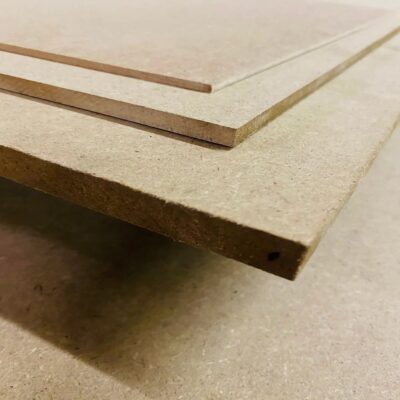Find out what MDF board is, what it’s used for, the set of advantages and disadvantages that go with using this type of board, and the specialized MDF board productions.

What is MDF Board?
Medium-density fiberboard or MDF is a type of wood panelboard that is made from a mix of wood chips and fibers. This is a type of wood product that is often used in building projects. MDF board is made from a variety of natural materials including wood chips, sawdust, and fibers. The wood fibers are tightly packed together with a defibrator. This process often uses bonding agents such as glue, wax, or resin. By using incredibly high temperatures and pressures, the wood fibers are combined to form modified wood panels that often behave and work like traditional hardwood panels. In most MDF, the final product contains about 80% natural wood fibers, and 20% other materials including glue, resin, or additional strengthening fillers.
What is MDF Board Used For?

MDF can be made in a variety of shapes, sizes, and thicknesses. This gives MDF a variety of uses for building. Water resistant MDF is commonly used in areas of the home that may be particularly humid, such as bathrooms and kitchens. MDF is commonly used for paneling, such as faux tongue and groove beadboard.
MDF can be used for furniture production in addition to applications in the home. The strong and smooth engineered wood is easy to cut and shape to create any type or size of furniture. Thin pieces of MDF can be used to create intricate curves and finishes, while ultra-light MDF boards can be used in applications where traditional MDF or plywood may be too heavy. This lightweight version of MDF is often two-thirds the weight of traditional MDF.
Are There Advantages and Disadvantages Of MDF Board?
MDF is a manufactured wood panel that has many features that are beneficial to builders. Each piece is precisely engineered, so it has very consistent dimensions and shapes. Also, because the panels are made from the finest wood fibers, there are no difficult knots in the wood to deal with in MDF pieces. MDF is usually very smooth and takes a paint finish easily. The composite wood board can also easily be glued. MDF is a great material for creating wood veneers for finishes. This product is often more versatile and affordable than using traditional wood or plywood.
Although MDF is a composite material, it has some disadvantages. MDF is consistently heavier than traditional plywood because the resin used to piece the small wood fibers is very dense. Its dense nature can make it harder for saw blades to cut through it. MDF can be prone to warping or breaking in humid or wet conditions. All MDF contains urea-formaldehyde, which can be harmful if inhaled. Working with MDF can release this harmful substance, leading to health risks. It is important to always use appropriate personal protection measures when working with MDF. Work outdoors in a well-ventilated area.

 Office Furniture
Office Furniture










